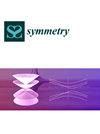核的形状-相变和六振子
IF 2.2
3区 综合性期刊
Q2 MULTIDISCIPLINARY SCIENCES
引用次数: 0
摘要
这篇综述深入探讨了利用玻尔哈密顿量的β自由度内的六振子来阐明原子核的临界点解,特别强调了与β形状变量相关的临界点,它控制着从球形核到变形核的转变。首先,概述了临界点解E(5)、X(5)、X(3)、Z(5)和Z(4)。这些对称性被封装在简单的模型中,所有模型都使用无限平方阱(ISW)势来模拟β自由度。它们对于解剖从球形到变形核形状的相变特别有用。这些模型之间的区别在于它们对γ自由度的处理。这些模型基于几何背景,采用玻尔哈密顿量。然后继续对相同的临界解进行分析,但在β自由度内采用性势代替ISW势。六分频振荡器是准精确可解的(QES),可以推导出能量谱较低部分的精确解。对这一分析的结果进行了详细的检验。此外,各种版本的性势,虽然不是完全可解的,但仍然可以在数值上解决,提供了一种方法来建立从球形到变形形状过渡路径的临界基准。本综述将其范围扩展到过去20年来在该领域发表的相关论文,有助于全面了解核物理中的临界点对称性。为了促进这种理解,提供了一幅描绘核素图中应用这些模型的不同区域的地图,作为它们在核结构领域的应用和影响的简明总结。本文章由计算机程序翻译,如有差异,请以英文原文为准。
Nuclear Shape-Phase Transitions and the Sextic Oscillator
This review delves into the utilization of a sextic oscillator within the β degree of freedom of the Bohr Hamiltonian to elucidate critical-point solutions in nuclei, with a specific emphasis on the critical point associated with the β shape variable, governing transitions from spherical to deformed nuclei. To commence, an overview is presented for critical-point solutions E(5), X(5), X(3), Z(5), and Z(4). These symmetries, encapsulated in simple models, all model the β degree of freedom using an infinite square-well (ISW) potential. They are particularly useful for dissecting phase transitions from spherical to deformed nuclear shapes. The distinguishing factor among these models lies in their treatment of the γ degree of freedom. These models are rooted in a geometrical context, employing the Bohr Hamiltonian. The review then continues with the analysis of the same critical solutions but with the adoption of a sextic potential in place of the ISW potential within the β degree of freedom. The sextic oscillator, being quasi-exactly solvable (QES), allows for the derivation of exact solutions for the lower part of the energy spectrum. The outcomes of this analysis are examined in detail. Additionally, various versions of the sextic potential, while not exactly solvable, can still be tackled numerically, offering a means to establish benchmarks for criticality in the transitional path from spherical to deformed shapes. This review extends its scope to encompass related papers published in the field in the past 20 years, contributing to a comprehensive understanding of critical-point symmetries in nuclear physics. To facilitate this understanding, a map depicting the different regions of the nuclide chart where these models have been applied is provided, serving as a concise summary of their applications and implications in the realm of nuclear structure.
求助全文
通过发布文献求助,成功后即可免费获取论文全文。
去求助
来源期刊

Symmetry-Basel
MULTIDISCIPLINARY SCIENCES-
CiteScore
5.40
自引率
11.10%
发文量
2276
审稿时长
14.88 days
期刊介绍:
Symmetry (ISSN 2073-8994), an international and interdisciplinary scientific journal, publishes reviews, regular research papers and short notes. Our aim is to encourage scientists to publish their experimental and theoretical research in as much detail as possible. There is no restriction on the length of the papers. Full experimental and/or methodical details must be provided, so that results can be reproduced.
 求助内容:
求助内容: 应助结果提醒方式:
应助结果提醒方式:


